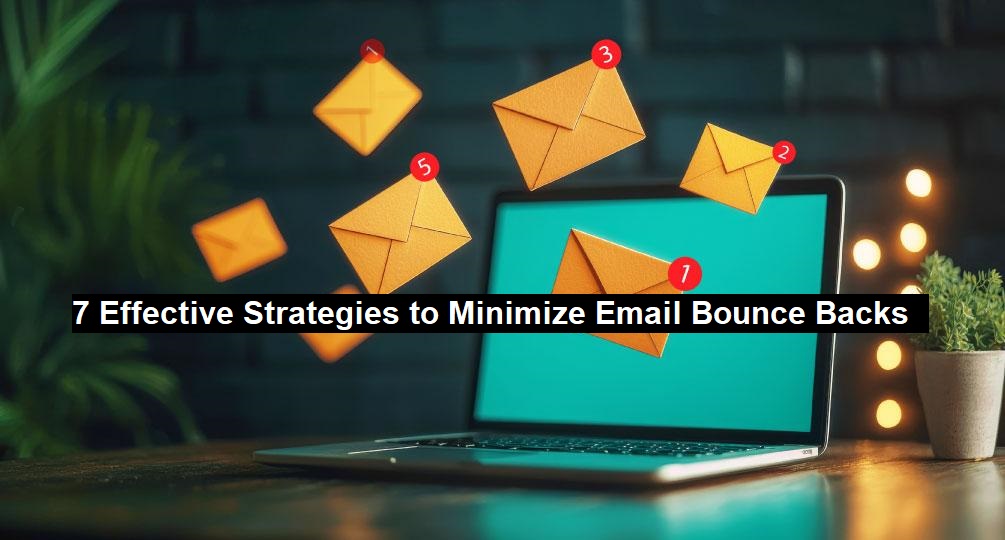In this dynamic digital world, email marketing is one of the most powerful tools to reach targeted audiences effectively. Email marketing plays a vital role in digital marketing platforms. Unfortunately, email bounce back rate becomes a barrier which will affect their marketing efforts.
To reach their marketing goals and targets, marketers should focus on email bouncing rates. The high email bounce rates will affect the send reputation, and the marketing email will be marked as spam.
This article elaborates on what an email bounce back is and effective strategies to minimize email bounce backs.
Read: The Future of Digital Government Services: Revolutionizing Birth and Death Certificate Access
What is an email bounce back?
An email bounce back is an indication that the email sent from the sender does not reach the recipient’s inbox due to some issues. Once the email has not reached the recipient, the non-delivery report (NDR) will be sent to the sender with the detailed information of the email bounce-back. This bounce-back may occur due to several reasons such as the recipient’s inbox full, email address does not exist, server issues, poor sender reputation, flagged content in the email message, and spam complaints.
Types of email bounce back
There are two types of email bounce back such as hard bounce and soft bounce. This classification helps the marketers to segment the bounce back emails and sort out the issues. With this try they can enhance their email marketing efficiency.
Hard bounce
The hard bounce refers to the permanently unavailable email due to various reasons like wrong email addresses, spam filters, and server misconfiguration. It indicates that the emails can’t be delivered in future also. So, marketers should remove those email addresses from their list to enhance their efficiency.
Soft bounce
Soft bounce refers to the temporarily unavailable due to reasons like recipient’s inbox being full, a server is temporarily overloaded, low sender reputation, and the recipient may be using an autoresponder. Marketers can retry with these email addresses instead of removing them permanently from their email subscription list. But they should monitor every retries and take necessary actions accordingly.
Strategies to minimize email bounce backs
- Leverage double opt-in method
Marketers can use double opt-in method to collect email addresses. Just buying a list of emails from any source is not an efficient way to reach your target audience. Opt-in strategy is the best way to get acknowledgement from the customer itself. First decide your target audience, then implement an opt-in strategy and get their email address from the customer in exchange for some valuable rewards. As your email list composed of verified and interested audiences, it enhances the sender’s reputation and reduces the chances of your email being marked as spam.
- Check your delivery reports periodically
Monitoring your email delivery reports regularly helps you to identify the undelivered email addresses and take necessary steps like removing email addresses and retrying with some email lists. Maintaining a healthy email list helps marketers to enhance deliverability and sender reputation. This will enhance the chance of not missing the interested customers from your campaign list to increase the engagement rate.
- Use automation tools
Various email marketing automation tools are there to help marketers to enhance their marketing strategies. These email marketing tools integrate various tools and applications like email bounce checker that automates the monitoring process of bounce-backed emails. This makes the bounce-backed email segmentation an easy process. With this segmentation, marketers can clean their email lists regularly without any lack in the process. These automation tools help the marketers to reduce the email bounce rates and enhance sender reputation.
- Personalize your content
Personalization always creates a positive impact. Use email marketing tools to analyze customer behavior and preferences and categorize your email lists based on similarities among them. This segmentation helps the marketers to personalize their marketing content based on the email list.
- Avoid spam triggers
Try to avoid spam triggers like excessive sales language, risky keywords, and promotional content. Ensure your email design is balanced on both image and text equally. When spam filters identify any of the spam content, it will block your email to receive in inbox. To reduce your email bounce back rate, highly focus on avoiding such spam content in your email.
- Maintain consistency
Regularly contacting your customers will not only keep them engaged, but also it enhances trust and reliability around your brand. So, try to maintain consistency in communication. At the same time, it should be too often. As a marketer, you should predict the right interval to send email which will not make customers irritate and also it will make a positive impact. Based on this schedule your email campaigns and keep your customers engaged.
- Track and monitor the progress
Track and monitor the email marketing campaigns regularly to identify the bounced emails and clean your email lists. Analyze your reports often and optimize your strategy to reduce email bounce backs.
Conclusion
As the email marketing plays a vital role in the digital marketing landscape, marketers should focus more on reducing email bounce back rate. They can leverage email marketing automation tools to automate various processes and analyzing the email bounce back rates. Also, they should build effective strategies to monitor and reduce the email bounce back rates. With the minimum email bounce backs, marketers can achieve their goals and targets more effectively.



